“Wow, I could never do that,” is one of the most frequent responses foster dog parents hear when they mention that they foster dogs. It’s common for people to applaud the selfless efforts of foster parents, and we appreciate the praise. But there’s one thing that’s much more helpful than thanking fosters and volunteers: helping in any way that you can.
Fostering isn’t always easy, but it’s more uplifting and fulfilling than anything else. Yet, many families don’t even consider it because they have too many worries and assumptions about it. Anyone who wants to save dogs in need should try fostering, even if they only do it once. If you’re intrigued by the idea of making this world a better place for dogs, then here’s everything you need to know about fostering.
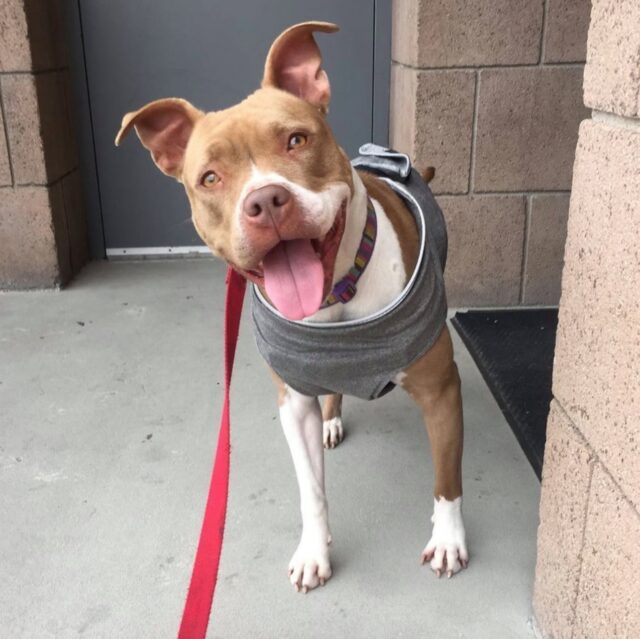
What is it Like to Foster Dogs?
Fostering is different for every family and every canine. In general, fostering is a way to get an animal out of a crowded shelter and into a loving home. Many dogs that need to be fostered are even rescued from high-kill shelters. So, it’s about more than just making dogs comfortable. In many cases, fostering saves lives!
When you foster, it’s like dog-sitting. Most of the supplies will be provided for you. So, you can have an extra companion in your home without breaking the bank. Of course, you need to remember that this new friend is only a temporary house guest. That’s the scariest part for many foster parents, but you’ll come to learn that it’s also the most exciting part.
You’re helping a dog find their happily ever after. Who knows what could’ve happened to them if you hadn’t chosen to foster? When you think about it like that, it’s hard not to be happy for your foster dog in the end.
Seeing each foster dog’s journey first-hand is a heartwarming experience. It’s one thing to hear stories of dogs being saved, but it’s even better to get to know some of those dogs personally. So, once you’ve found the best home for your foster dog, you’re ready to help more dogs if you’d like. Fostering might not be for everyone, but it’s at least worth a try. Even fostering one dog makes an impact.
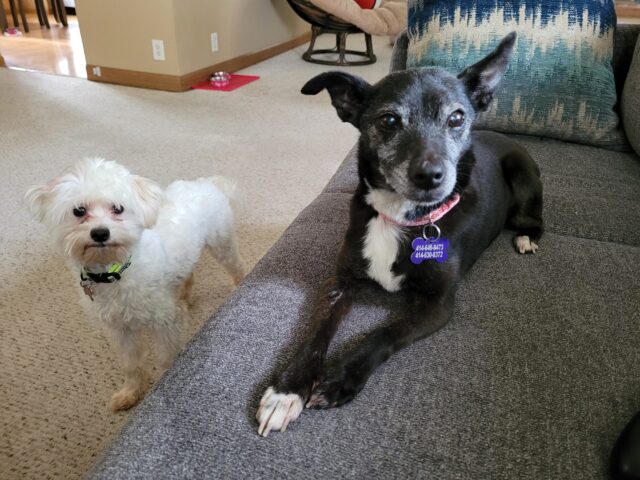
Reasons to Try Fostering Dogs
Most foster parents start fostering for one specific reason: to make a difference, but there are also plenty of other reasons to foster too.
#1 – Fostering Saves Lives
For some dogs, fostering does more than just change their life, it saves them! Many adoptable dogs come from high-risk shelters where they might even be on the euthanasia list. Rescues and shelters with open space can transport these dogs away from kill shelters and to loving foster homes. So, by fostering, you’re helping more dogs escape high-kill shelters, which saves your foster dog’s life and frees up space in overcrowded kennels. Fostering one dog could save multiple dogs’ lives!
#2 – Foster Homes Showcase a Dog’s Personality
In a noisy shelter, it’s hard for a dog to grow and feel comfortable. Many dogs in shelters are anxious, but open up more when they’re in a loving home. The Animal Welfare organization Maddie’s Fund conducted a research study that took long-stay shelter dogs out of the shelter for a day to see how their personalities would change. Many dogs, including a sweet Pit Bull named Mugzy, came to life shortly after leaving their kennel space.
“Common sense tells us even the nicest shelter is a noisy, unfamiliar, unnatural, and downright scary place for most dogs,” said project consultant Kristen Auerbach, Director of Pima Animal Care Center in Tucson, Arizona. “Time and time again, we see dogs’ demeanors transform almost the second they step a paw off of shelter grounds.”
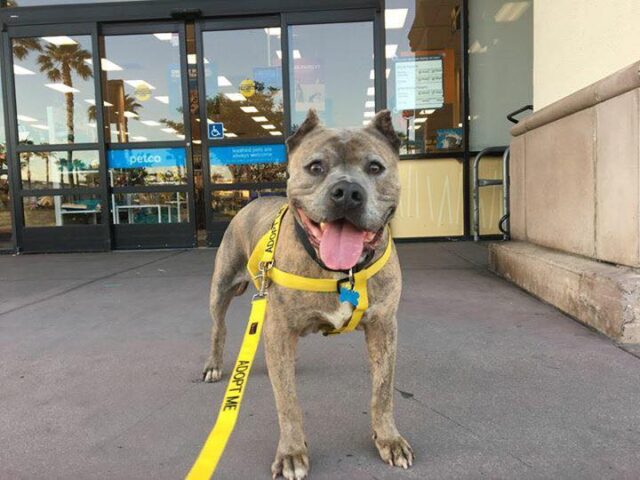
#3 – Dogs in Foster Homes are More Likely to Get Adopted
Since shelter dogs are less stressed in a foster home, they also tend to get adopted faster. It certainly helps that a person gets to spends lots of one-on-one time with the dog. Their foster family gets to learn all the dog’s quirks and lovable traits. The more information the rescue can share about the dog, the more appealing they’ll seem to potential adopters.
Popular: Compare Pet Insurance Plans from all The Major Carriers
#4 – It’s Affordable
It’s hard to say no to a free dog! Most foster programs offer all the basic supplies you’ll need, including food, medications, and a crate. So, fostering is sort of like having a dog for free, which is exciting, even though it’s only temporary. It’s a great option for families who can’t afford a dog of their own yet.
#5 – It Can Help Socialize Your Pets
If you have pets of your own, it can be a great experience for them too. If your dog loves to play, then they’ll likely be ecstatic about the many friends that come and go. However, if your dog isn’t a fan of other dogs, they can still benefit greatly. Fostering is a great way to introduce your pets to a variety of different dogs, which can help them become more comfortable around fellow canines.

#6 – You Can Learn What Dogs are Best for You
Even if you’re not ready to adopt a dog anytime soon, you’ll likely want to in the future. Fostering is a great way to get to know a wide variety of dogs. You can foster dogs of all different ages, sizes, and breeds. Through fostering, you can learn what kinds of dogs are the best fit for your household, which can eventually help you find a new family member when you’re ready to do so.
#7 – Fostering is Flexible
When you choose to foster, it’s not an insane commitment that you can’t get out of. Most rescues and shelters allow a lot of flexibility with fostering. You’ll get to choose what dogs you take in, which can ensure that you only take on dogs that you feel confident handling. When one dog gets adopted, you can choose when you want to start again. You won’t be expected to keep taking one dog after another. So, you can foster on your terms to ensure that it doesn’t disrupt your schedule too much.
#8 – Fostering is Fulfilling
Many dog lovers focus on how sad they think fostering is, which causes them to forget about the bright side. Fostering is much more fulfilling than sad, and it will help you feel like you’re making a difference in the world. You get to watch a dog come out of their shell and finally see what love is like. Without you, they might not have found the perfect forever family, so it’s an experience that’ll make you feel good in the long run.

What is a “Fospice”?
Some organizations might also offer “fospice care,” which is a mix of the words fostering and hospice. Fospice allows you to give a loving home to a dog who’s near the end of their life, such as a senior or a dog with a terminal illness. Instead of preparing your foster for a forever home, you’ll be the loving family they get to spend their final days with.
Why Should You Consider Fospice?
Fospice care might sound more emotional than traditional fostering, but that means it’s often more rewarding. Many older dogs never get a chance to find a family, so you would be giving them a warm and welcoming place to spend their final days rather than passing away in a scary kennel. Fospice care isn’t for everyone, but it’s another great way to change a dog’s life.
Not all shelters and rescues have a designated fospice program, but if you ask, they might be willing to offer it for certain dogs. After all, every dog should end their life in a place where they feel comfortable and loved.
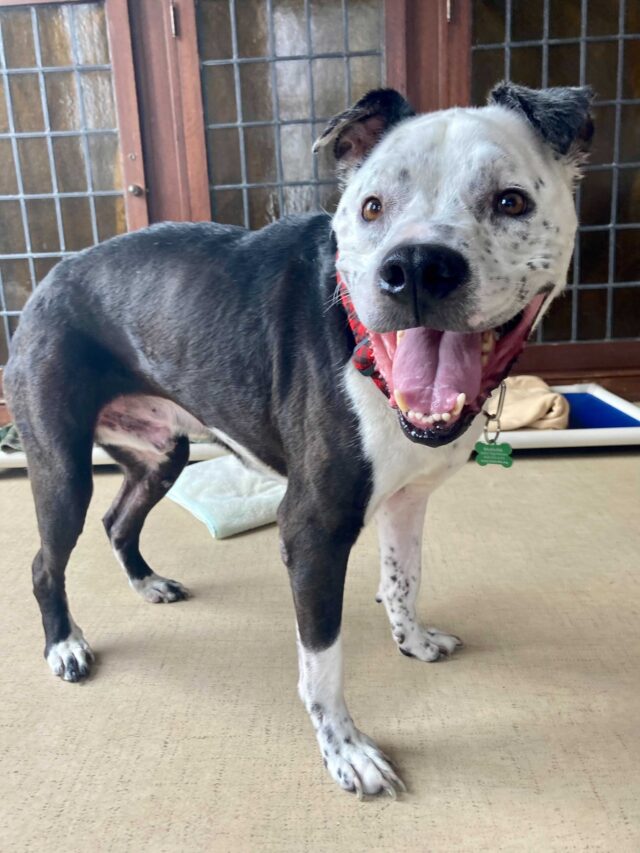
Signs You’re Ready to Start Fostering Dogs
Fostering dogs is an incredible experience, but like all new things, it involves some preparations. Don’t rush into fostering if everyone in your household isn’t ready for it. While rescues always need more fosters, they don’t want you to take on more than you can handle. So, if you’re still on the fence, then here are some signs that you’re ready to foster dogs.
#1 – You Have Everyone’s Permission
Before all else, make sure everyone in your home is on the same page. Talk about fostering with roommates, significant others, children, and anyone else that might live with you. Even if you plan to take full responsibility for your foster dog, your other family members will still need to be around the dog at times. Don’t jump into fostering until you have the consent of everyone else in your home.
#2 – You Have a Reasonable Schedule
You don’t have to pay attention to your foster dog 24/7, but you need to at least have time for basic needs. If you work for 12 hours daily without anyone else to help you at home, then fostering probably isn’t a good idea. Foster dogs need to go to the bathroom, eat, and be loved just like any other dog. The more flexible your schedule is, the easier fostering will be.
#3 – You Have the Right Mindset
Emotions are the biggest deciding factor for those interested in fostering. Many people assume that they can’t foster because they get attached too easily. Yet, you’re supposed to get to know the dog and bond with them. It helps them get adopted faster. So, to ensure that your emotions don’t get in the way, you need to foster with the right mindset. Instead of worrying about growing too attached, just keep reminding yourself that you won’t be keeping the dog. Even better, remind yourself of all the amazing ways you’re making a difference by fostering.

#4 – You Have Some Extra Space
Most places have enough space for an extra dog if you can handle the extra responsibility. But if you live in a tiny apartment, it might restrict the dogs you can take in. You should at least have an extra room so you can separate the foster dog from your pets if necessary. If you rent, you’ll also need to ensure that your lease allows an extra pet.
#5 – You Understand Basic Pet Care
You don’t need much experience to foster, but you should at least understand basic pet care. If you’ve had a dog of your own before, fostering will be a much easier transition. You should know about basic care requirements and training techniques. Of course, fellow volunteers will be happy to give you advice and training, but the more you know about dogs, the easier fostering will be.
#6 – You’re Willing to Be Patient
Many dogs get adopted quickly, but others need more time. Some foster dogs will need time to come out of their shell or time to work on training. As a foster parent, you need to be patient with your foster dog as you watch them grow. You also need to be willing to wait for the right family to come along, which sometimes takes longer than expected. If you’re not good with staying calm and accepting an unknown timeline, then fostering might be tricky.
#7 – You Want to Make a Difference
Nearly every foster has some fears before their first foster dog enters their life. Yet, their determination to make a difference often overshadows those worries. If you want to save lives and make a difference for dogs, then you should try fostering at least once. After all, loving dogs is one of the most important aspects of a foster family.

Common Dog Fostering Myths
Myths and assumptions cause people to not even consider fostering. But there’s a lot about fostering that the public doesn’t realize, so let’s debunk these foster dog myths.
Myth #1 – Fostering is Sad
This is easily the most common myth that circulates. People are quick to say, “how do you do it?” or “isn’t it hard not to keep them all?” For many foster parents, it’s not easy to see fosters go, but it’s even harder to see them not find a forever home. So, when dogs get adopted, it’s more of a reason to celebrate than mope. It’s how you know you’ve made a difference. Fostering is about overcoming your feelings to give the dogs better lives.
“Remember your foster dog will love their new adopted family just as much, likely even more, than they loved you,” said Susanna Kogut, president of the Petco Foundation. “But you will always be the one who saved their life, and they will never forget you. So that difficult feeling of letting go is a small moment in time, a small ask, to save a life.”
Myth #2 – Fostering Takes too Much Time
Some dogs require much more attention and care than others, but most foster dogs just need a comfortable place to rest their head. Remember that the alternative is staying in a scary kennel. So, even if you don’t have time to play with your foster dog day and night, they’ll still be more comfortable in foster care than at a shelter. Plus, some fosters are rescued from the euthanasia list, so any home could be a lifesaver to them. Flexible schedules with lots of free time are easiest for fostering, but saving a dog’s life doesn’t have to take too much time out of your day, as long as you can provide them with basic care.

Myth #3 – It’s Hard to Take Vacations While Fostering Dogs
Animal organizations understand that their volunteers have lives outside of fostering. They won’t expect you to give up vacation time to care for dogs in need. Most rescues have a system for finding vacation coverage for your foster while you’re away. Plus, you can choose to take breaks in between fosters if you need a little more time to yourself.
Myth #4 – You Need Lots of Space to Foster
For many organizations, a big house with a fenced-in yard isn’t a requirement for fostering. Most rescues are happy to accept as many foster families as they can get. It might be difficult to keep a high-energy large breed in a small apartment, but you can still foster smaller dogs or seniors. Not all dogs need lots of space to thrive, so your living situation doesn’t have to be a barrier to fostering.
Myth #5 – Fostering is Bad for Your Pets
Having strange dogs come and go will be confusing to resident pets at first. Luckily, in most cases, your pets will benefit from fostering more than anything else. Foster dogs and resident pets can get extra socialization from the situation. Plus, many dogs are happy to have a playmate, even if it’s only temporary. Even if your pets don’t get along with the foster dog, it’s possible to separate them and provide a slow transition. In most cases, it’s a win for all animals involved.
Myth #6 – Only Difficult Dogs Need Foster Homes
Dogs of all ages, breeds, sizes, and behaviors might need foster homes. Sure, some of them might be difficult, but many foster dogs are easier to care for than expected. If you don’t feel comfortable taking on a special needs dog or a dog with behavioral problems, then you don’t have to. You can choose which dogs to foster based on what feels right to you. After all, rescues want living situations to be ideal for both the humans and dogs involved.

Myth #7 – Fostering Dogs Requires Professional Skills
You don’t need any special skills to foster. Sure, it helps if you’ve had a dog of your own before, but it’s not usually required. Shelter volunteers will be happy to answer any questions and concerns you might have, as well as help you along the way. As long as you’re a responsible person who loves dogs, you’ll be able to get the hang of fostering.
Myth #8 – Shelters Don’t Need Many Foster Homes
Foster families are always needed, even if shelters and rescues don’t advertise it often. The more families that sign up to foster, the more dogs that can be brought to the rescue. Foster homes are crucial for opening up space in shelters, so most shelters and rescues won’t turn away new foster parents. Taking in a foster dog can save at least two lives: the dog you’re fostering and the dog that took their place at the shelter. No matter when you decide to foster, there will always be a need for more help.
Barriers for Fostering Dogs and How to Overcome Them
When mentioning fostering to new people, it’s common to hear excuses for why they can’t foster. Of course, fostering isn’t the right form of volunteering for everyone, but it’s common for people to overlook it right off the bat. Here are a few fostering barriers that people commonly experience. In many cases, there are ways to overcome these obstacles.
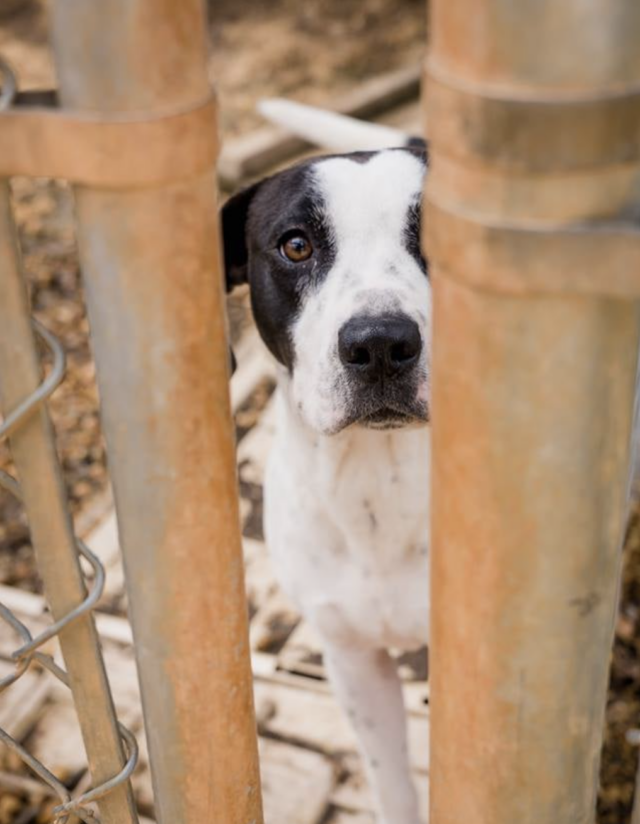
You’re Worried About Getting Too Attached
There’s no way to guarantee that you won’t fall in love with your foster dog. In fact, it’s a good thing if you do! The more you love a dog, the more you’ll want them to find their happy ending. Just because you become attached to a dog doesn’t mean you have to keep them. It might make it harder to say goodbye to them, but that heartbreak will be temporary. And it’s the price we pay for helping these dogs never feel heartbreak again.
The best way to get past the “sad” part of fostering is to keep reminding yourself that you’re doing the right thing. For many dogs, a foster home is just a blip in their life, but that doesn’t mean it’s not important. You’re the person who helped save that dog’s life, and you’re the one who brought them to the perfect home. If you continuously focus on that part of fostering, then it’s hard not to feel some sort of fulfillment and happiness when your foster finds a forever home.
Of course, you can even offer to dog-sit your former foster dogs in the future. Many people are excited to leave their dog in a familiar space when they go on vacation. Some families will be happy to give you updates after the dog’s adoption too.
You Only Want to Foster Certain Dogs
Many families fear they’ll get stuck with the difficult dogs. So, they only want to foster very specific dogs to avoid extra stress. Luckily, it’s okay to be picky while fostering. Of course, the difficult dogs need foster homes more than anyone else, but they’re not the only dogs who need them. If you only feel comfortable fostering little dogs, that’s fine. If you only want low-energy dogs, that’s okay too! Choose your foster dogs based on what seems right for your household. Fostering easy dogs is better than fostering no dogs at all.
You’re Concerned About the Time Commitment
If you’re at work most of the day, you might be hesitant to foster. But many people work a 9 to 5 job while still having a dog. So, there’s no need to feel guilty about crating your foster or not paying attention to them enough. It’s likely that their forever family won’t be home 24/7, so giving them alone time can help prepare them for their future home. Most adult foster dogs just require basic needs and some love, so you don’t need to pay attention to them during every waking moment. As long as you’re able to give them more care and love than a shelter can, that’s what matters.

You’re Worried About Something Going Wrong
If you’re a natural worrier, it’s hard not to focus on what could go wrong. When it comes to health or behavior problems, it can be scary to not know how to handle them. But when it comes to fostering, you’re not alone! The rescue or shelter will likely provide you with an emergency contact list when you take in your first foster dog. They might even assign you a mentor to answer all your questions and help solve problems. In fact, some rescues even have a social media community for volunteers to interact with each other. So, while it’s uncommon for an emergency to occur, there will always be plenty of fellow dog lovers to help you through it.
What Happens if You Foster Fail?
“Foster fail” refers to when a foster family adopts their foster dog. In reality, this isn’t a failure at all! The dog still gets a loving home, which was the goal all along. If you choose to foster fail, you just need to make sure you’re doing it because you’re ready for another dog, not because you’ve gotten too attached to your foster.
Here are a few things to consider before you foster fail:
- Are you allowed to foster fail? Some rescues have rules against adopting your first few foster dogs, so talk to your rescue about it before making a decision.
- Will it affect your ability to foster in the future? If you adopt your foster dog, you might not be able to keep fostering more dogs. If that’s the case, are you sure you’re willing to stop fostering?
- Does it make sense for your family? It’s easy to get caught up with feelings while fostering. Before you apply to adopt your foster, it’s a good idea to take a step back and think about it logically. Is your family ready for another dog in terms of space, time, and money?
If you’ve thought it through very carefully, then of course there’s no shame in foster failing. After all, you’ll still be saving a dog in need.
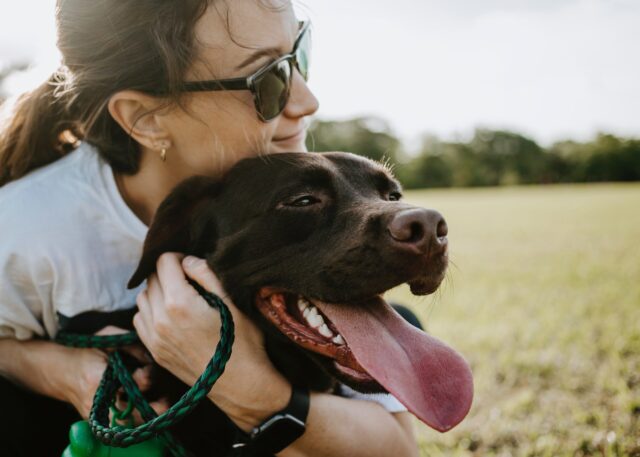
Stories of How Fostering Dogs Can Save Lives!
There are countless success stories about how fostering makes an impact. Maddie’s Fund found lots of success stories while studying how taking dogs out of the shelter for the day could impact their wellbeing. Most dogs thrived the second they left the shelter, including an adorable Pit Bull named Kathy.
Kathy was very anxious at Louisville Metro Animal Services. She frantically barked and jumped when anyone walked by, causing her to have too much energy for most fosters to handle. Foster coordinator Stephanie Jackson knew that the pup needed a chance to get out of the overwhelming shelter. She worked with other fosters to give Kathy short-term foster outings.
“Kathy needs someone to help advocate for her and help her find a foster or forever home,” said Jackson. “Kathy is one of the most at-risk dogs at the shelter right now because she is deteriorating in her kennel. Every day she gets to leave the shelter is a positive impact on her life.”
Every day, different volunteers took Kathy out of the shelter to help her interact with new people. Her social skills and leash manners quickly improved. Only a few weeks after she started getting out more, she found her forever family!
Foster Homes Help Dogs Shine
Kathy is just one of many great examples. During the Maddie’s Fund’s study, an overnight foster named Hiam got a second chance. He wasn’t available for adoption at the shelter because of his behavior problems. But after someone posted about his adventures outside of the shelter for the day, a family quickly fell in love with him and fostered him until he got adopted.
Grey is another dog who was considered “unadoptable” at the shelter. He was a resource guarder who also destroyed any fabric he could grab onto. Once he was in a foster home, he was able to calm down and work on his destructive behaviors. He ended up getting adopted by a woman who just went through a divorce and didn’t have any expensive furniture for him to destroy. She has been working with him ever since, and she loves him more than anything.
Of course, these are just some of the many dogs who have benefitted from foster care. Even one day out of the shelter could help a dog’s personality come to life.
How Do You Get Started?
Are you interested in taking in your first foster dog? Many dog lovers don’t know where to start. There are many amazing shelters and rescues around the world, and nearly all of them would love to have more foster families available. Reach out to nearby animal organizations to find out how you can apply to foster for them. Every foster program will be slightly different, but they’ll all make an incredible impact on the dogs they save.
Fostering isn’t always difficult or sad. More often than not, it’s an uplifting, exciting, and rewarding experience. The more dog lovers that give fostering a try, the more dogs that can be saved.
 Toledo, United States.
Toledo, United States.